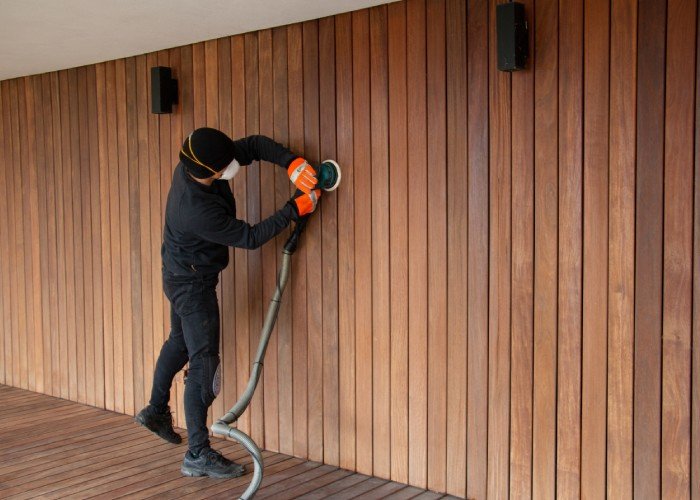What is timber cladding?
Timber cladding is a building material made from natural wood, used to cover the exterior or interior walls of a structure. It serves both functional and aesthetic purposes, offering protection against the elements while enhancing the appearance of a building with a warm, natural finish. Popular for its sustainability, durability, and versatility, timber cladding can be arranged in different profiles and finishes to achieve a modern or traditional look. It also provides additional insulation, helping improve energy efficiency.
Timber cladding offers a versatile and sustainable option for enhancing the exterior and interior of your home. With its natural beauty and eco-friendly properties, it is an ideal choice for those looking to improve their property’s aesthetic appeal while embracing sustainable practices.
As sustainable home design gains popularity, timber cladding emerges as a preferred choice for homeowners seeking both environmental responsibility and aesthetic charm. This material not only provides a natural and attractive finish but also aligns with eco-conscious values. By incorporating timber cladding, you can enhance your home’s character and contribute to a greener planet.

Is timber cladding sustainable?
Timber cladding is renowned for its environmental benefits. It is often sourced from sustainably managed forests, ensuring that its use does not contribute to deforestation. Compared to other building materials, timber cladding requires less energy to produce, reducing carbon emissions associated with manufacturing and transportation.
Using timber cladding can also improve your home’s energy efficiency. It acts as an additional layer of insulation, helping to maintain indoor temperatures and reduce the need for heating and cooling. This not only lowers energy consumption but also decreases utility bills, making it a cost-effective choice for eco-friendly home improvements.
Aesthetic appeal and versatility
One of the most appealing aspects of timber cladding is its natural beauty. The rich textures and warm tones of wood add depth and character to any building facade. Timber cladding can be used in various styles, from traditional to contemporary, complementing a wide range of architectural designs.
Timber cladding is available in different profiles and finishes, offering flexibility in design. Whether you prefer a sleek, modern look or a rustic, weathered appearance, timber cladding can be tailored to suit your aesthetic preferences. Its versatility extends to interior applications as well, where it can be used for feature walls or ceilings to create a cohesive design theme.
Practical tips for using timber cladding
When considering timber cladding for your home, start by selecting the right type of wood for your climate and design needs. Cedar and larch are popular choices due to their durability and resistance to decay. Proper installation and maintenance are crucial to ensure the longevity of timber cladding, so it’s important to follow best practices and consult with professionals if needed.
To enhance the sustainability of your timber cladding, look for products certified by reputable environmental organisations. This ensures that the wood is sourced responsibly and meets high sustainability standards. Regular treatment and sealing will protect the wood from weathering, preserving its appearance and structural integrity over time.
The role of timber cladding in sustainable architecture
Incorporating timber cladding into your home design is a step towards sustainable architecture. It reflects a commitment to reducing environmental impact while enhancing the visual appeal of your property. Homes with timber cladding are often valued higher in the market due to their eco-friendly features and aesthetic appeal.
By choosing timber cladding, you contribute to a sustainable future while enjoying the immediate benefits of improved insulation and reduced energy costs. This choice not only benefits the environment but also enhances the comfort and beauty of your living space, making it a worthwhile investment for any homeowner.





